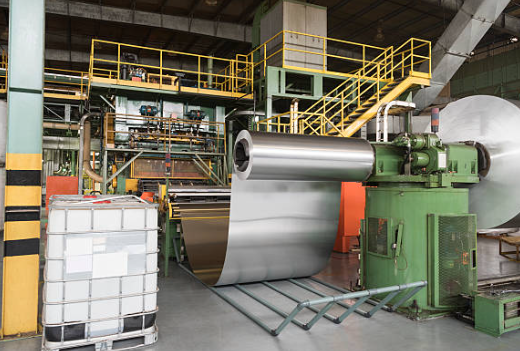
Posted on Friday, September 27, 2024
When it comes to roofing production, speed, precision, and efficiency are key to staying competitive in today’s construction market. Roll forming machines are the backbone of any high-volume roofing production line, but without the right auxiliary equipment, even the most advanced machines can’t reach their full potential. Two crucial pieces of equipment that often work behind the scenes are the uncoiler and the runout table. Though their roles may seem secondary, these machines significantly enhance the efficiency and smooth operation of roll forming lines in roofing projects.
The uncoiler plays a pivotal role at the very beginning of the production process. As the name suggests, its primary function is to hold and feed large metal coils into the roll forming machine. Without a properly functioning uncoiler, the entire line could come to a standstill.
Efficiency Through Automation
In roofing production, downtime is costly. Every minute the line isn’t running can add up to significant losses. By automating the unwinding and feeding process, uncoilers ensure a steady, uninterrupted flow of material into the roll forming machine. This not only reduces manual intervention but also minimizes the chance of material jams, which can cause costly delays.
Improved Material Handling
High-quality uncoilers come equipped with tension control systems that manage the coil's speed and tension, ensuring that the metal is fed into the roll forming machine at the right pace without stretching or damaging the material. This feature is especially critical in roofing, where consistency in the quality of the finished product is essential for both aesthetics and performance.
At the opposite end of the production line, runout tables ensure that the newly formed roofing panels are handled smoothly as they exit the roll forming machine. Without runout tables, finished products could be damaged, misaligned, or mishandled, all of which would reduce the overall quality of the panels and require rework.
Streamlined Handling
Runout tables are designed to support and guide roofing panels or other metal components as they come off the roll forming machine. This prevents bending, warping, or scratching of the finished product, which is especially important in roofing where large sheets need to maintain their structural integrity. By automating the collection and stacking of finished panels, runout tables speed up the post-production process and eliminate manual labor, further improving efficiency.
Ensuring Safety and Consistency
In high-speed production environments, safety is a primary concern. Automated runout tables reduce the need for workers to manually handle heavy and potentially dangerous materials, thereby minimizing the risk of workplace injuries. Additionally, by ensuring consistent handling and stacking of panels, runout tables improve the accuracy of downstream processes, whether the panels are being cut to length, packaged, or prepared for transport.
Both uncoilers and runout tables are essential to maintaining a smooth workflow in roofing production lines. These machines work together with the main roll forming equipment to create a fully integrated system that maximizes output while minimizing downtime and material waste.
Seamless Workflow
Uncoilers and runout tables help maintain a constant and reliable production flow, allowing the roll forming machine to operate at maximum efficiency. The uncoiler ensures a steady supply of metal into the machine, while the runout table guarantees that the finished panels are handled with precision and care as they exit. Together, they ensure that each part of the production process runs smoothly, reducing bottlenecks and production stoppages.
Consistency in Production
A well-functioning production line is one that produces consistent, high-quality products. By automating key parts of the material handling process, uncoilers and runout tables contribute to this consistency, ensuring that each roofing panel meets the same high standards in terms of quality and appearance. This reliability is essential in roofing projects, where defects in panels can lead to costly rework or even project delays.
In the world of roofing production, auxiliary machines like uncoilers and runout tables are essential to keeping the process efficient, smooth, and precise. These machines, though operating in the background, play a critical role in ensuring that roll forming lines can run at full capacity without interruptions or defects. By automating the material feed and collection processes, uncoilers and runout tables reduce labor costs, prevent material waste, and help manufacturers deliver high-quality roofing panels to meet tight project deadlines.
For roofing manufacturers looking to optimize their production processes, investing in the right auxiliary equipment is just as important as selecting the right roll forming machine. Uncoilers and runout tables are two key components that can elevate the entire operation, resulting in faster production times, better quality control, and a more efficient workflow overall.

32/1000 Box Profile Roll Forming Machine – Complete Guide & Specifications
Posted on Sunday, November 16, 2025
High-performance 32/1000 box profile roll forming machine for roofing and cladding. Full specifications, profiles, applications, pricing

PBR / R-Panel Roll Forming Machine – Complete Guide & Specifications
Posted on Sunday, November 16, 2025
PBR / R-Panel roll forming machine for roofing and wall cladding. Full specs, profiles, applications, pricing, and global buying guide. Built to order.

Posted on Sunday, November 16, 2025
How to Diagnose and Fix the Hidden Electrical Problems That Cause Downtime
Copyright 2025 © Machine Matcher.